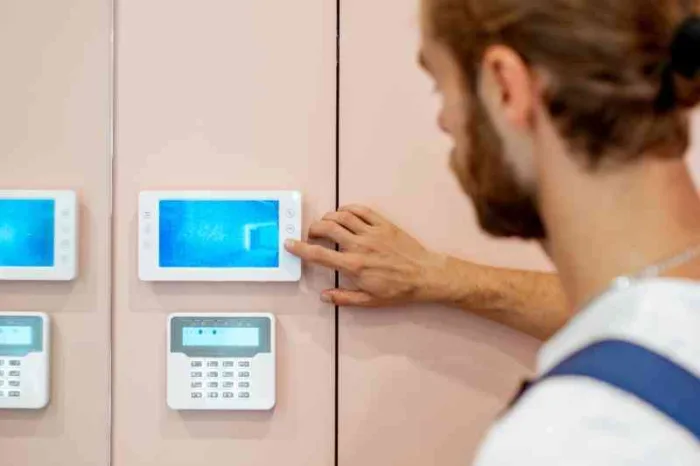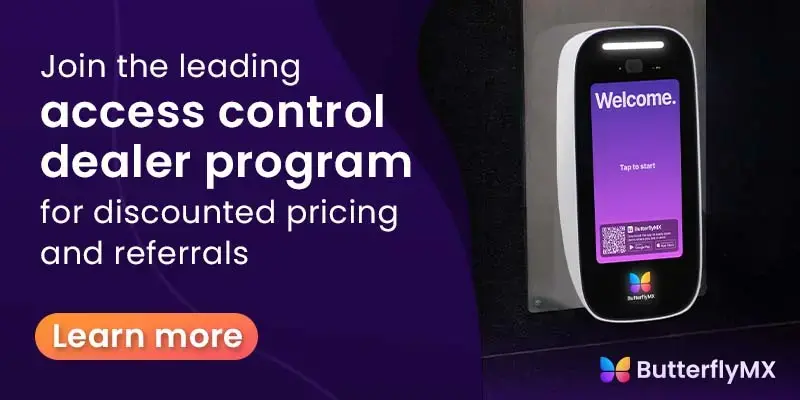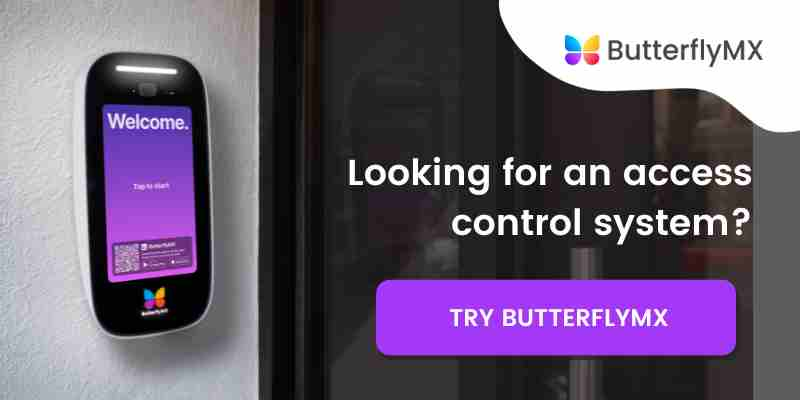Key takeaways
- IoT access control comes in many shapes and sizes. There are different hardware choices that you can install at an entryway.
- In addition, there are different visitor management options that allow building residents to remotely open the door. What’s more, there are IoT-based credentials, like key cards or fobs, that you can assign to your residents instead of brass keys.
- But the best way to take advantage of IoT access is to invest in a system that is entirely keyless, like a smartphone-based mobile access control system.
- By combining internet-powered mobile access control systems and keypads, you can bring all of the convenience of the Internet of Things to residents and staff.
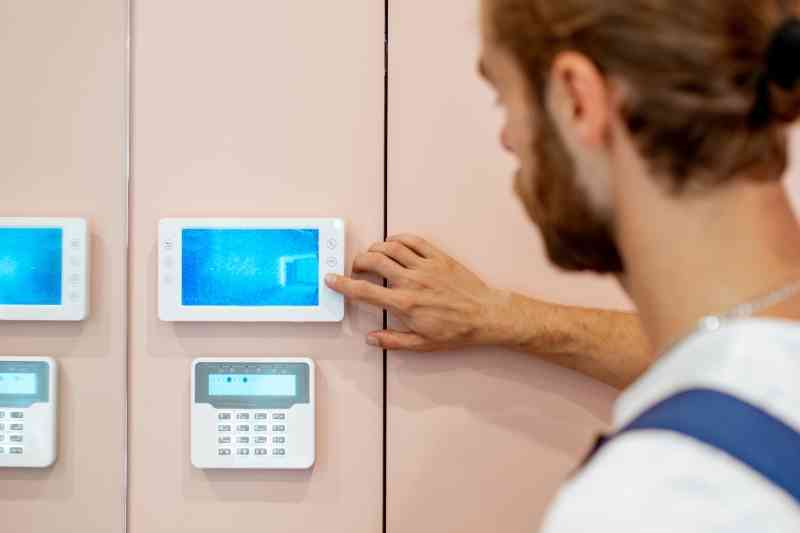
One of the biggest trends shaping today’s world is the Internet of Things (IoT). Chances are, you’re constantly interacting with Internet of Things devices — even today, you’ve probably used a smart watch, a voice assistant, or even just your smartphone. These same principles of connectivity and convenience have enabled IoT access control.
IoT access control offers a host of benefits for installers, property owners and managers, and residents alike. Read on to learn what IoT access control is and how it works. Then, discover the benefits of IoT access and find out which IoT system is best.
This post covers:
- What is IoT access control?
- How does IoT access control work?
- Benefits of using IoT for access control
- The best IoT access control system
What is IoT access control?
IoT access control is a method of controlling physical access that upgrades components like doors, locks, and credentials by giving them internet compatibility so that they can exchange data and communicate with each other.
Access control in IoT is one part of a larger Internet of Things movement that’s connecting the world. Many different industries use IoT to conduct business, from clothing companies selling wearable health monitors to farmers using IoT servers to automate farming equipment.
Forward-thinking access control system providers now use the same technology to simplify access for building tenants and visitors.
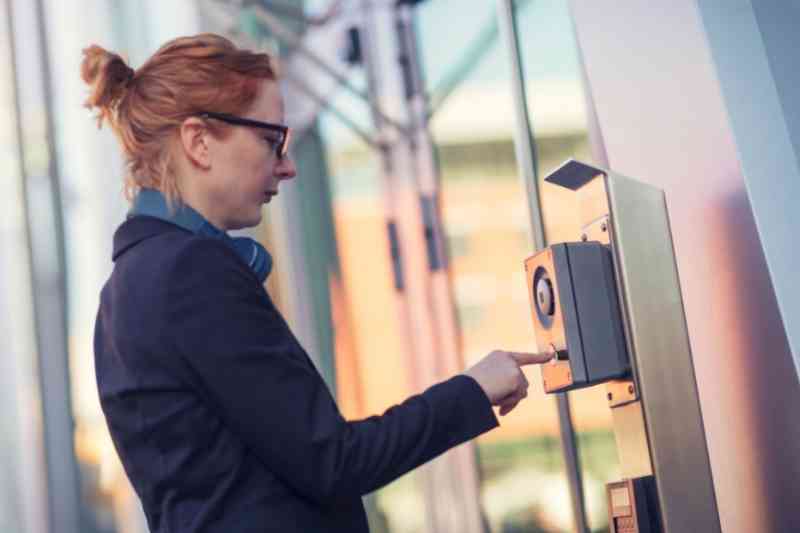
IoT access control systems have 3 parts:
- Credentials. Residents carry credentials that use tiny sensors or wireless transmission capabilities to convey data to readers. Credentials can take many different forms, from internet-powered cards and fobs to a mobile app that uses a smartphone to send out wireless signals.
- Reader. Readers take the information that credentials give them and use it to verify the user’s identity. The type of reader you install depends on the kind of credential you want residents to use. There are fob readers, Bluetooth readers, and smartphone-based readers, to name a few.
- Electric or magnetic lock. When the reader verifies that the credential is valid, it sends a signal to the electric or magnetic lock that secures a door. This lock disengages, and visitors can enter.
Some IoT access control systems also have hardware designed to manage visitor access. These are devices that a building tenant can use to talk to somebody at an entrance and remotely unlock the door for them. Examples of IoT visitor management hardware are door phones, intercom panels, and smartphones with mobile apps.
Watch how ButterflyMX works:
How does IoT access control work?
IoT access control works by using the Internet of Things to allow credential readers, locks, and door openers to communicate over the internet.
Access control software and hardware devices that communicate using the internet can exchange higher volumes of data than those using other mediums of communication, like radio or Bluetooth. This allows residents to use more features and staff to access more useful data. For example, IoT camera access systems increase security by letting staff view and store digital photos of every door release.
Here’s how a resident lets themselves into a building secured by IoT access control:
- Resident presents credential. A resident might have to physically touch their credential to a reader, or the reader may scan it from a distance.
- Reader scans credential. The reader uses antennas and sensors to read the data present on the credential. Then, it compares the data it received with a database of resident credentials.
- Reader directs door lock to disengage. If the reader finds a match, it directs the door to unlock. The resident can now enter.
Benefits of using IoT for access control
The internet has revolutionized the way we live and work. Using the internet, we can communicate with each other at lightning-fast speeds, and there’s a world’s worth of data that’s always at our fingertips.
These are qualities that IoT access control systems also use to simplify door and building access for residents while allowing property staff to easily manage the system.
In contrast to analog access control, an IoT-based access control system is:
Wireless
Wired access control systems come with a variety of disadvantages. Installing a wired access system is problematic because you’ll have to tear down walls and rip up floors to successfully install it. Maintaining the system poses the same issues. And because copper wiring is easily degradable and may corrode, you’ll have to spend a lot of time and money on maintenance.
Look for a wireless IoT system instead. You’ll still need at least one connection for power and internet, but you’ll no longer have to run wiring through every single access component. This will save you on installation and maintenance costs. Additionally, you’ll increase convenience for residents who won’t have to deal with malfunctioning hardware.
Keyless
The best IoT access systems save you the hassle of constantly reprinting and passing out keys as residents lose them or move out. Instead, you can give residents fobs or key cards, which are much easier to replace and manage. Or even better, you can choose a mobile access control system so that tenants can use their smartphones to open doors.
Keyless access comes with other benefits, too. Some access systems only require a credential to be in close proximity and don’t require contact. Because residents don’t have to physically make contact with a reader, keyless entry is more sanitary than analog entry.
Integration-friendly
Say you just installed a lock for a new amenity space, like a gym. Now, you’re responsible for passing out a whole new set of keys to your residents. Adding a new lock to an analog access control system is cumbersome, time-consuming, and inconvenient.
In contrast, IoT access management is simple and convenient. From an online dashboard, you can update tenants’ existing credentials with new access permissions. Or, you can create digital credentials to grant residents access to new spaces without having to create new, physical credentials.
And, some IoT access systems are cloud-based. They can integrate with property management software to ensure that resident access permissions are always up to date.
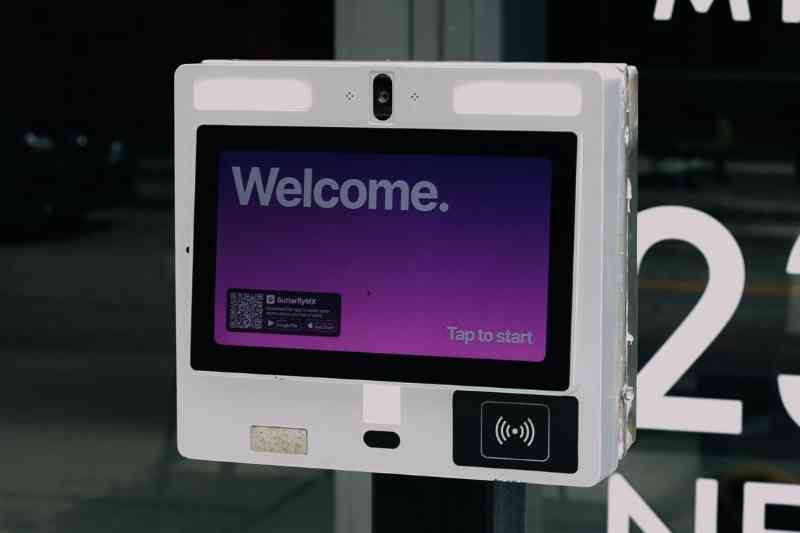
The best IoT access control system
While it’s true that IoT access systems are more convenient than analog ones, not all IoT systems are built the same.
For example, a system that uses fobs or cards still presents issues when residents lose fobs or new residents require new fobs. Or some systems might only serve one area of your property, preventing you from integrating it with an existing analog system.
The best IoT access control system consists of:
- Smartphone-based video intercom. A mobile access control system takes all the convenience of IoT access and puts it in your residents’ pockets. The best mobile access control systems use all the capabilities of a resident’s smartphone to their advantage, enabling features like two-way video calling and Visitor Passes for guest access.
- Keypad. Keypads are great for securing interior spaces that don’t need to control access for visitors. Extend IoT access further into your property by investing in a system of keypads that integrate with your intercom. You’ll ensure that you can manage your entire property using one system. And smartphone-based IoT keypads give tenants two ways to open the door — with their phones or a PIN code — which increases versatility and convenience.
